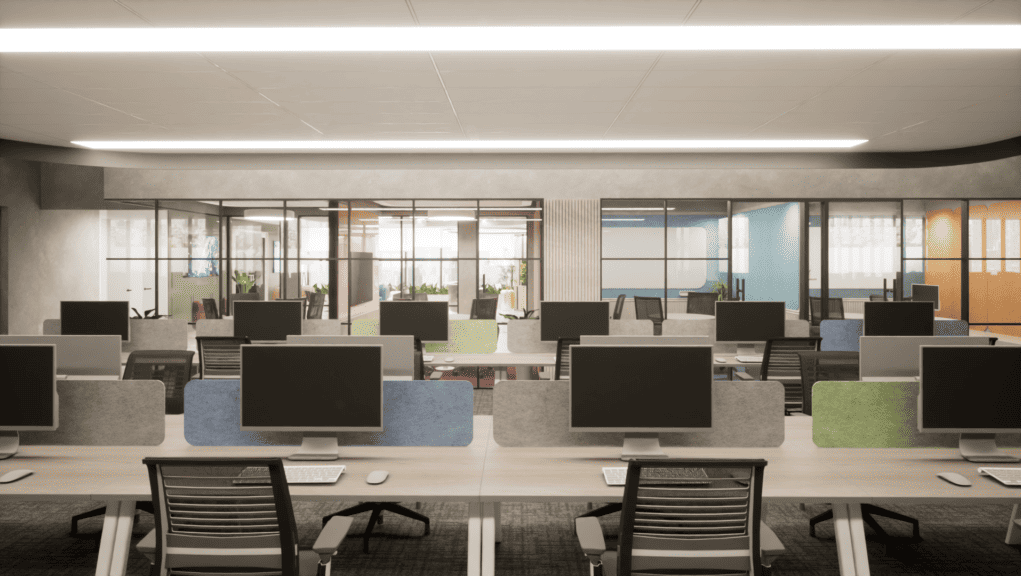In the modern workplace, office furniture does far more than just provide a place to sit or work. It has become an essential element in shaping the environment, culture, and productivity of any organization. The evolution of office furniture mirrors the transformation of work itself, from traditional cubicles to collaborative open spaces. Let’s delve into the journey of office furniture, exploring its historical roots, current trends, and future possibilities.
Office Furniture:
The concept of office furniture can be traced back to the 19th century, coinciding with the rise of industrialization and the emergence of large-scale organizations. Early office furniture was primarily functional, designed to accommodate paperwork and facilitate clerical tasks. Wooden desks, filing cabinets, and swivel chairs dominated the landscape, reflecting the hierarchical structure prevalent in traditional office settings.
The Shift towards Ergonomics:
As the focus on employee well-being and productivity increased in the latter half of the 20th century, the importance of ergonomics in office furniture gained prominence. Ergonomic chairs with lumbar support, adjustable desks, and monitor stands aimed to enhance comfort and reduce the risk of musculoskeletal disorders caused by prolonged sitting.
This shift was not only about physical health but also about optimizing cognitive performance. Furniture designs began to prioritize flexibility and adaptability, recognizing the diverse needs and work styles of employees. Height-adjustable desks and modular workstations allowed for seamless transitions between sitting and standing positions, promoting movement and reducing sedentary behavior.
Steel Cabinet:
In recent years, the traditional cubicle-centric office layout has given way to more open and collaborative environments. This shift has been accompanied by a new wave of office furniture designed to foster communication, creativity, and teamwork steel cabinet. Shared work tables, lounge seating, and breakout areas have become commonplace, encouraging spontaneous interactions and idea exchange among employees.
Moreover, the integration of technology into office furniture has transformed these spaces into hubs of connectivity and innovation. Smart desks equipped with wireless charging pads and built-in monitors enable seamless collaboration and productivity, blurring the lines between physical and digital workspaces.
Sustainability and Wellness:
In response to growing environmental concerns and a heightened awareness of well-being in the workplace, sustainability and wellness have emerged as key considerations in office furniture design. Manufacturers are increasingly using eco-friendly materials and production processes, prioritizing recyclability and energy efficiency.
Furthermore, there is a growing emphasis on biophilic design principles, incorporating elements of nature into office furniture and interiors to promote a sense of calm and connection with the natural world. Living walls, natural lighting, and ergonomic furniture inspired by organic forms contribute to a healthier and more harmonious work environment.
Counter Table:
Looking ahead, the future of office furniture is likely to be shaped by advancements in technology, changing work habits, and evolving organizational cultures. Augmented reality (AR) and virtual reality (VR) could revolutionize the way we interact with furniture, allowing for immersive customization and virtual collaboration across geographical boundaries.
Moreover, as remote and hybrid work models become increasingly prevalent, office furniture will need to adapt to accommodate flexible and mobile lifestyles counter table. Portable workstations, collapsible furniture, and modular layouts will enable employees to create productive environments wherever they are, blurring the distinction between home and office spaces.
Additionally, the ongoing COVID-19 pandemic has highlighted the importance of health and safety in the workplace, prompting innovations in antimicrobial surfaces, touchless technology, and air purification systems integrated into office furniture.
Conclusion:
In conclusion, office furniture has evolved from its humble beginnings as mere functional fixtures to become integral components of modern workplaces designed to enhance productivity, collaboration, and well-being. From ergonomic chairs to collaborative workspaces and sustainable designs, the trajectory of office furniture reflects broader shifts in work culture, technology, and societal values.
As we continue to embrace new ways of working and interacting, the future of office furniture holds boundless possibilities for innovation, creativity, and human-centered design. By prioritizing flexibility, sustainability, and employee wellness, organizations can create environments that inspire creativity, foster collaboration, and support the evolving needs of their workforce in the digital age.



















